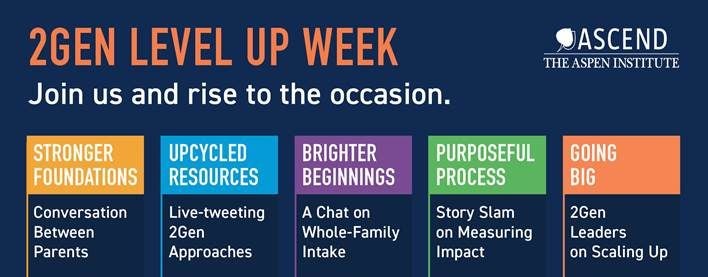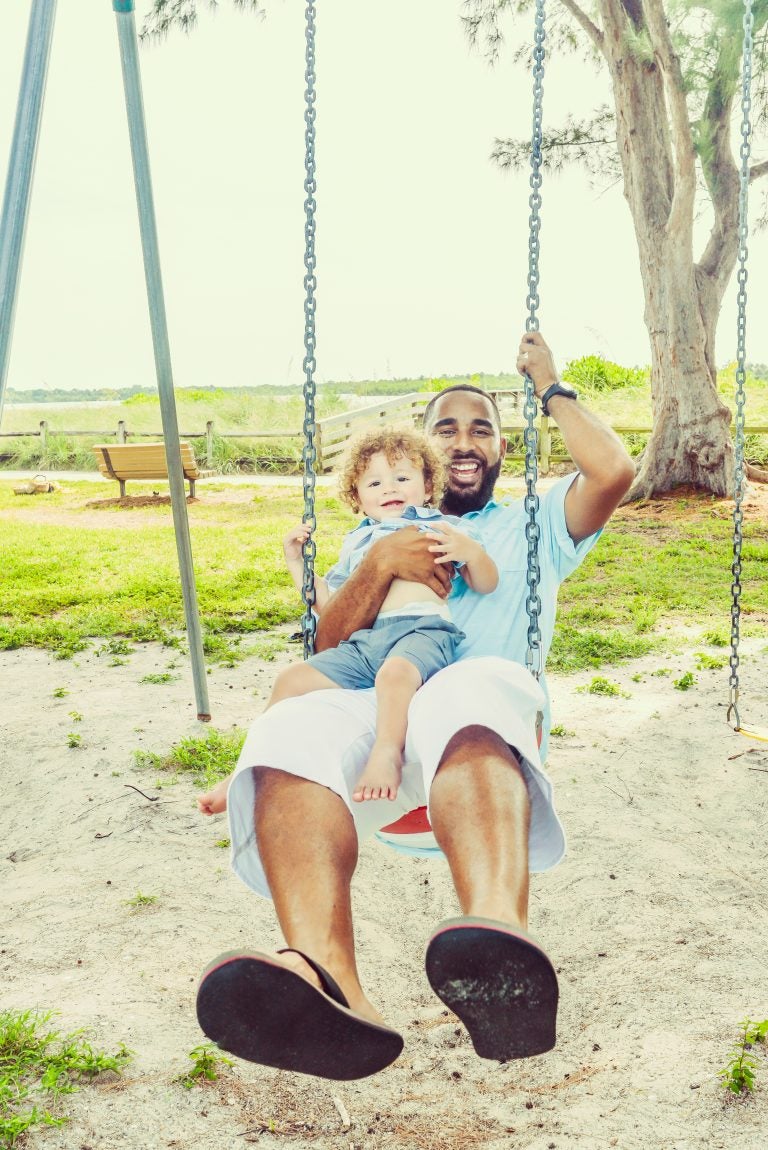WEBINAR: State Opportunities and Challenges in Advancing Child Care Innovation
As the hub for breakthrough ideas and collaborations that move children and their parents toward educational success and economic security, Ascend is intensifying its efforts in the midst of the coronavirus pandemic to highlight 2Gen solutions that Ascend Fellows and the Ascend Network have developed over the past decade to help families reach their potential. Ascend is examining how new solutions, anchored in a 2Gen approach, can build and improve long-term outcomes that stabilize the health, economic well-being, and education of families as they recover and move forward from the COVID-19 crisis.
In a series of webinars, Ascend is tapping the insights, expertise, and resources of the Ascend Network, Ascend Fellows, parents, and policy partners to offer solutions for how best to assist families now and ensure they have a stronger, more equitable future. Read on to learn about the State Opportunities and Challenges in Advancing Child Care Innovation webinar, and visit this page to learn more about the series.
Child care is the backbone of the nation’s economy – making it possible for millions of parents throughout the United States to go to work or attend school. Before the pandemic, tremendous work was already underway to create a stronger, more equitable child care system. Now, as child care centers throughout the country shutter, states are rapidly aligning resources to expand child care access for essential workers and support child care centers that are at risk of permanently closing. These efforts are yielding new innovations to support the early childhood field long-term in achieving better outcomes for whole families. To explore opportunities to build on models – from family-based care to the role of museums to states’ bold new approaches – and embed 2Gen approaches in early childhood, Ascend invited parents and practitioners to discuss the current state of child care.
Speakers:
- Anne B. Mosle, Vice President, the Aspen Institute, Executive Director, Ascend, Co-Chair, Aspen Forum on Women and Girls
- Rebecca Gonzales, CEO and Founder, Time to Learn Daycare
- Laura Huerta Migus, Executive Director, Association of Children’s Museums
- Erica Phillips, Chief Operating Officer, All Our Kin
- Judy Reidt-Parker, Director, National Policy, Ounce of Prevention Fund
The webinar was moderated by Sarah Haight, associate director for network and outreach at Ascend.
Watch the webinar recording here. Download the presentation here.
Access to affordable, quality child care is critical to getting the economy moving again. Without it, parents cannot return to work. However, before this crisis, the high cost of quality care was already a challenge for many working families. Now, with state budgets stretched even tighter, maintaining a high staff to child ratio and fulfilling other staffing requirements that lend themselves to best practices of quality care will be challenging and could push the cost of care even higher.
The pandemic is shining a spotlight on the fragility of our child care system and making it clear that we cannot go back to the old system. It is also highlighting opportunities to build a new system that works better for families and caregivers. This includes recognizing the importance of family child care centers, which have remained open over the past two months at twice the rate of child care centers.
With federal and state policymakers focused on restarting the economy, now is the time to redefine what family prosperity means for the entire country and bring an ecosystem approach to creating the future we want moving forward. This must include offering child care providers support and the political will to safely move forward.
Momentum for Policies to Build a Stronger Child Care System
The Coronavirus Aid, Relief, and Economic Security (CARES) Act, included an additional $3.5 billion for the Child Care Development Block Grant (CCDBG), to allow states, territories, and tribes to provide financial assistance to child care providers and ensure providers that serve children who receive child care subsidies can continue to operate during the COVID-19 public health crisis. States can also access these funds to provide child care to healthcare workers, first responders, and other essential workers who are playing critical roles during this crisis, regardless of their income.
Funding to help child care providers keep their doors open, improve quality of care, and serve more families is an important first step to improving access to quality care. In states throughout the country, other policies and approaches to support providers are gaining momentum, including:
- Improving working conditions for child care providers and teachers by recognizing health care as a core payroll expense and allowing them to use paid leave;
- Supporting telehealth and education to create greater flexibility for parents whose schedules do not match typical child care hours;
- Expanding understanding that child care providers are on the front lines of the pandemic;
- Making family care centers eligible for small business and paycheck protection loans;
- Basing payment rates for child care on the true cost and not the market rate, to ensure early educators are earning a living wage; and
- Increasing investment in training, referral, and child care recruitment systems and providing more professional development and coaching as care providers and early educators adapt their operations to meet the needs of a post-pandemic world.
Other policy changes can make child care more accessible to working families, such as:
- Making some of the temporary changes to the CCDBG more permanent (e.g., increasing the amount of time available to families as they search for jobs and eliminating some of the hoops families need to jump through); and
- Limiting the cost of child care to no more than 7 percent of a family’s income.
Children’s Museums Offer Innovative Solution to Child Care Challenge
Children’s museums can play an important role in improving access to quality child care. Acknowledging children do not come to museums by themselves, children’s museums are designed to work for children and their parent or caregiver, make them inherently 2Gen. Of the nearly 300 operating children’s museums in the United States (including the Virgin Islands and Puerto Rico), 10 percent host a child care program on site and many more are set up to serve as child care centers if needed.
Currently, all children’s museums are closed, but they continue to operate in their communities in a number of ways, including distributing food and offering online programming. Some children’s museums are also working to obtain licensing to become temporary child care sites for first responders and other essential employees. As recommended social distancing continues, museums could remain closed for the next 12 to 18 months or longer. During this time, they could provide space for expanded child care services. Leveraging this opportunity will require children’s museums—which are intensely local institutions—to make the leap to the state system level to leverage statewide infrastructure.
As economic rebuilding gets underway, now is the time to connect this critical issue to the country’s economic stability and build public and political will for change. Ascend and its Network will continue to keep an eye on where resources are going and how funding streams—from the Administration for Children and Families, Department of Education, Head Start, Medicaid, and more—are coming together in states and communities to address challenges and create a new system and vision for what communities of care and equity and family prosperity can look like.
Questions from Participants
Are there any states using presumptive eligibility for Medicaid for early education?
Judy Reidt-Parker: Not specifically. We are focused on securing an extended time period for families and for mothers during postpartum experiences.
Can you speak more about the framework you use for your business practices, both how it was developed and how you use it?
Erica Phillips: We have a 10-part child care business series that then goes into one-on-one coaching. This includes supporting providers around stabilizing and increasing their income through marketing and setting cost, ensuring providers can manage their costs, and ensuring providers have strong policies to undergird all of this. What is unique about our approach is how the information is delivered. We are focused on adult learning and cohort-based groups and use interactive professional development that also respects child care providers as business owners. This includes making sure they have one-on-one coaching on the business side.
Rebecca Gonzales: The business courses and coaching help with the financial side of running a quality care program and keeping administration on track.
Do you have any good examples of children’s museums partnering with human services departments?
Laura Huerta Migus: The Providence Children’s Museum has had a long partnership with the state Department of Children and Families to provide support to children in foster care. Children’s museums also often serve as sites for occupational therapy and promoting positive parent/child relationships. This varies from site to site. It would be great to see a systematic approach to recognizing what children’s museums can offer. There are a lot of pilot projects going on, but we need a systemic approach, particularly at the state level.
How do we fit in or approach the issues that impact youth under age 18 who are playing the role of caregiver while their parents are working during this situation?
Judy: This is a gap in family, friend, and neighbor care. Older siblings are often doing the caretaking and subsidy policies don’t allow payment to family members. We need to offer opportunities for these informal care givers to learn the basics to ensure quality care. It would be great to support them through the children’s museums. If we did a better job honoring family, friend, and neighbor care, we would see the ripple effect.
Considering the high cost for both providing and accessing care, the pandemic could leave care even more expensive. How do we ensure equity moving forward?
Judy: [We can address this] by bolstering supports for family child care providers. Thinking about family child care networks and shared services networks could help with the cost. The reality is, high quality care costs money and we have underpaid it for decades. We have a workforce that wants the same things we offer parents. We need to change our approach and keep this conversation going. [Access to affordable, quality child care] is a public good on multiple levels and we need to solve for it.
Erica: We spend a lot of time looking at family child care businesses. There are no places to lower the costs. Instead, we need to build public will and talk about it in a way that gets us closer to available funding. We need to look toward federal funds and access more money to ensure equity in the system.
Related Posts















